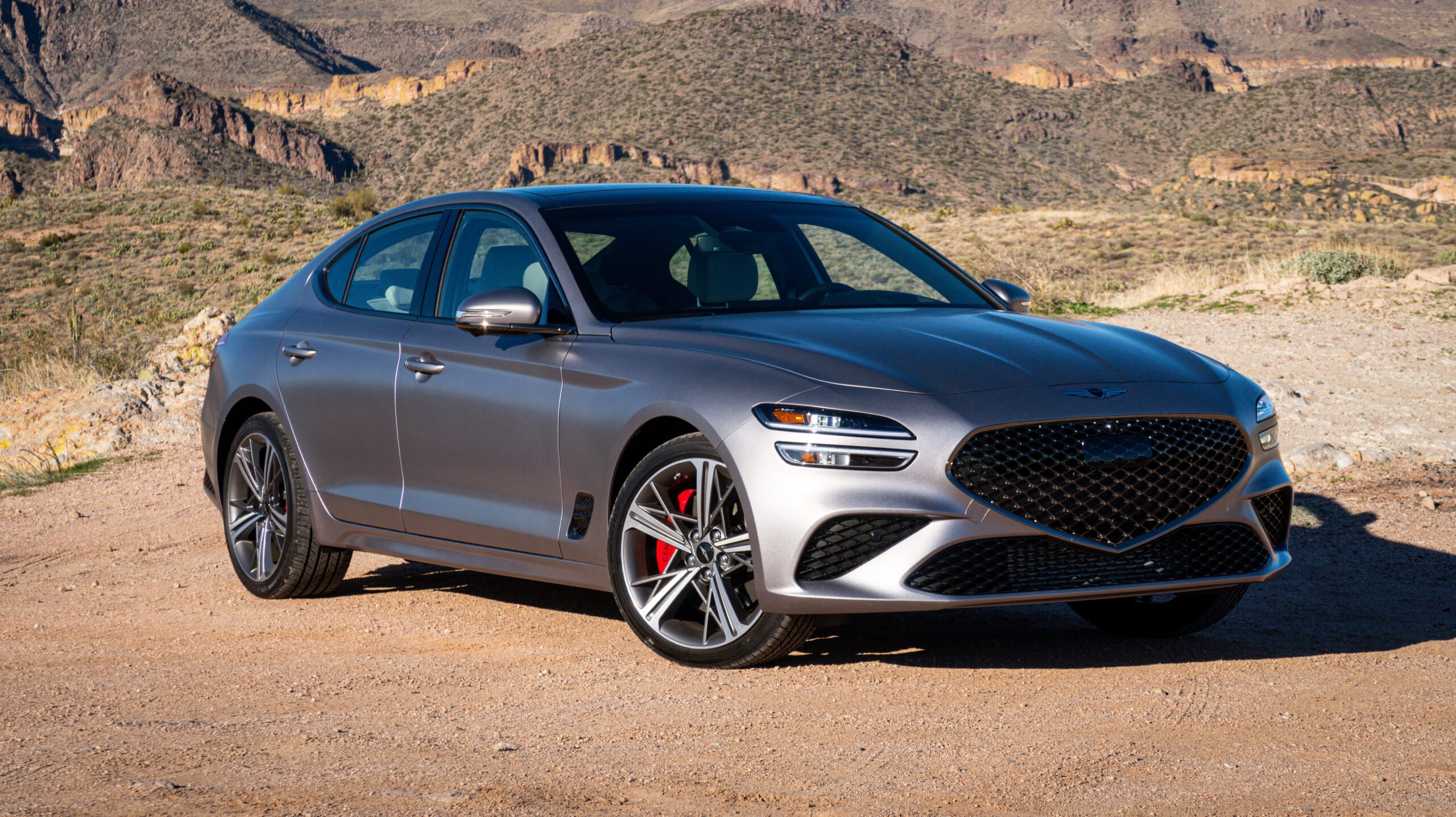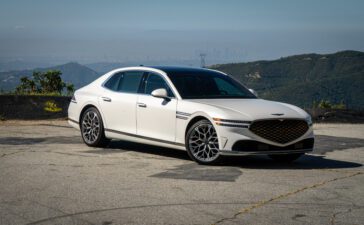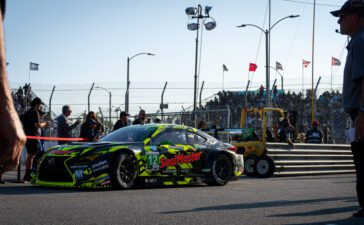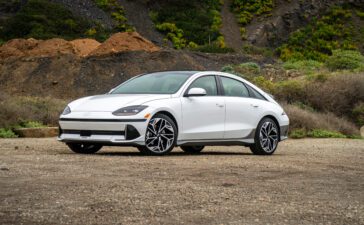It’s been said before, and I’ll say it again. Korea is on a roll with turning its automotive image around in a full one-eighty defined by legitimate quality, performance, and design. And there’s arguably no better practitioner of this newfound efficacy than the Genesis brand, which has now revamped the G70 sports sedan for the second time in its current generation. So, even though it feels like the car had just launched yesterday, extend a warm welcome to the newly-refreshed 2024 Genesis G70, now loaded with more tech, more style, and, ahem, more power, baby!
Queue lightning sound effects and loud James Pumphrey noises, please. Thank you.
Price and specs
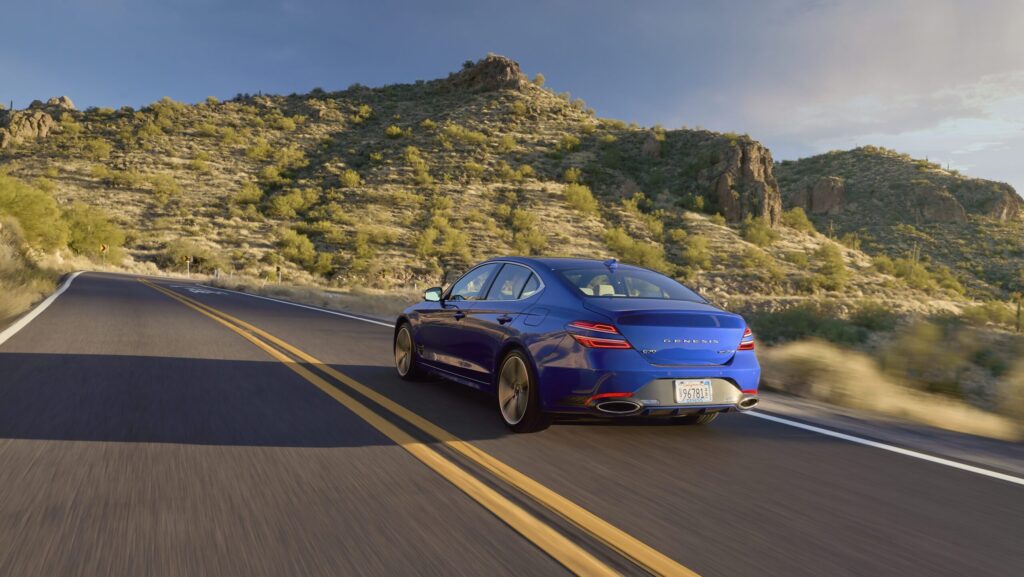

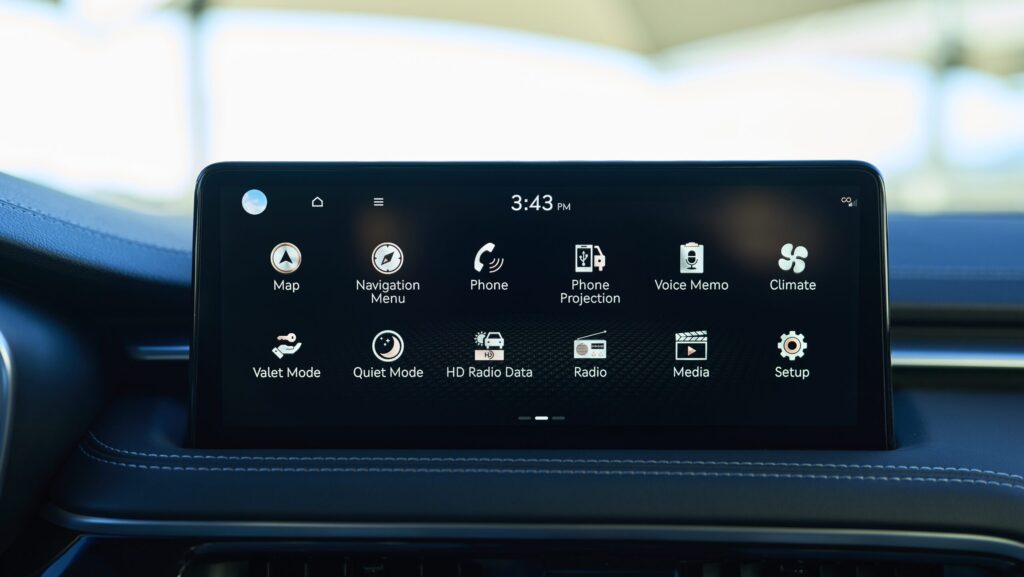

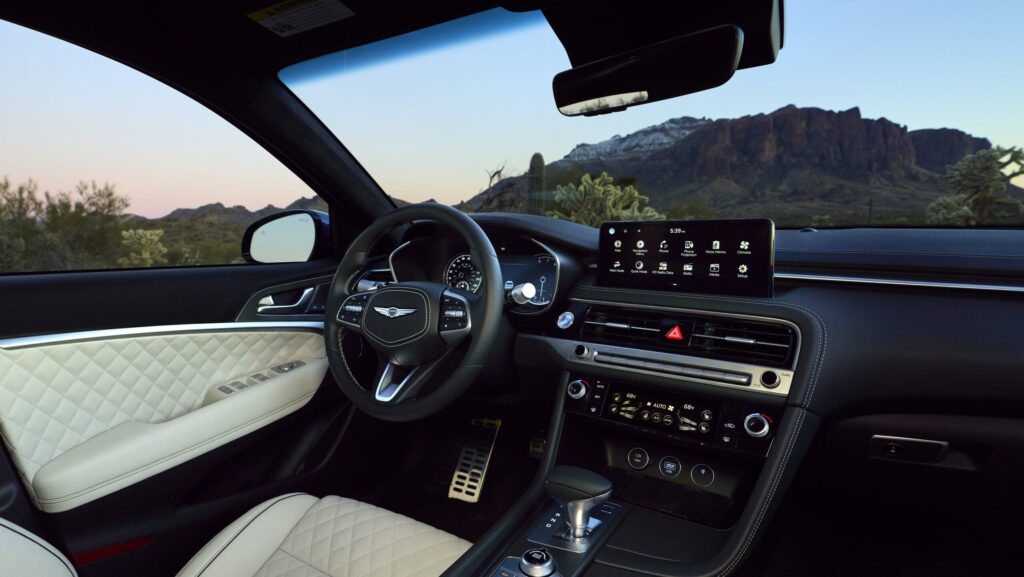
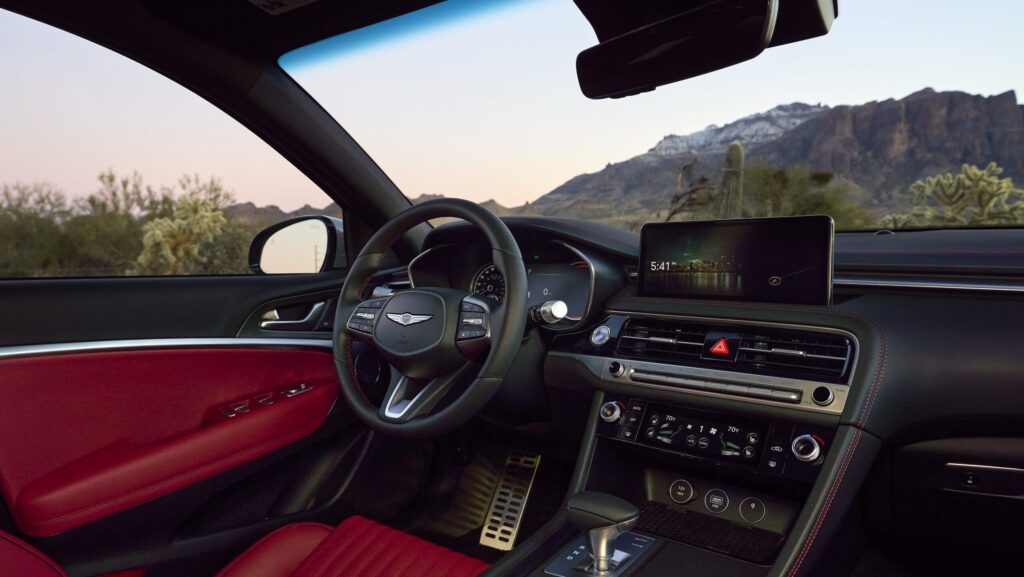
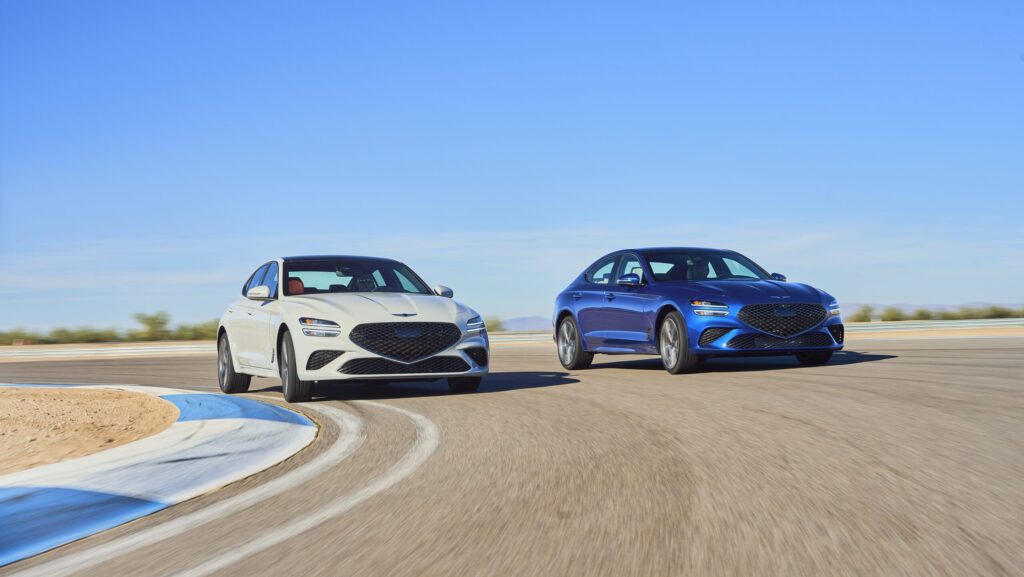
Yes, you can still get a cushy, reasonably well-equipped G70 for well under the average American new car sales price, with the base model rear-driver selling for $41,500 before the $1,195 destination fee. All-wheel drive is a $2,100 upgrade to all models, while the top-shelf Sport Prestige pack with diamond-stitched Nappa leather, a heads-up display, and extra tidbits of safety and performance tech fetches a $4,200 premium on base engines and $4,400 on the 3.3T.
Fun fact: If you mosey on over to their online configurator, you’ll notice the outgoing, pre-revision G70 started at $39,400. The gap between the old base car and the current base car is the same in cost as the upgrade to all-wheel drive. Neat.
[Button id=”369″]
| Base prices: | $41,500 (2.5T Standard RWD), $43,600 (2.5T Standard AWD), $49,950 (3.3T Sport Advanced RWD), $52,050 (3.3T Sport Advanced AWD) |
| Engine choices: | 2.5-liter turbocharged I4, 3.3-liter twin-turbocharged V6 |
| Transmission choices: | 8-speed automatic |
| Drivetrain choices: | rear-wheel drive, all-wheel drive |
| Power: | 300 horsepower (2.5T), 365 horsepower (3.3T) |
| Torque: | 311 pound-feet (2.5T), 376 pound-feet (3.3T) |
| Weight: | approx. 3,700 pounds (2.5T), approx. 3,900 pounds (3.3T) |
| Zero-to-60 mph: | approx. 5.5 seconds (2.5T), approx 4.5 seconds (3.3T) |
| ¼-mile: | approx. 13.5 seconds @ 105 mph (2.5T), approx. 13.0 seconds @ 110 mph (3.3T) |
| MPG: | 21 city, 29 highway, 24 combined (2.5T RWD), 20 city, 28 highway, 23 combined (2.5T AWD), 18 city, 27 highway, 21 combined (3.3T RWD), 17 city, 26 highway, 20 combined (3.3T AWD) |
| Fuel capacity: | 15.8 gallons |
What’s new?
A goodie bag of smaller details
On the surface, it looks like much hasn’t changed from this generation’s first revision, and you’d be mostly correct. Genesis admits the biggest addition to this generation of G70 is a new base engine, which we’ll dabble in just a sec. But for now, it’s also worth diving into all the subtle performance and tech changes made to keep this compact luxury sports sedan relevant in an age of increasing competition from EVs and fellow sports sedans alike.


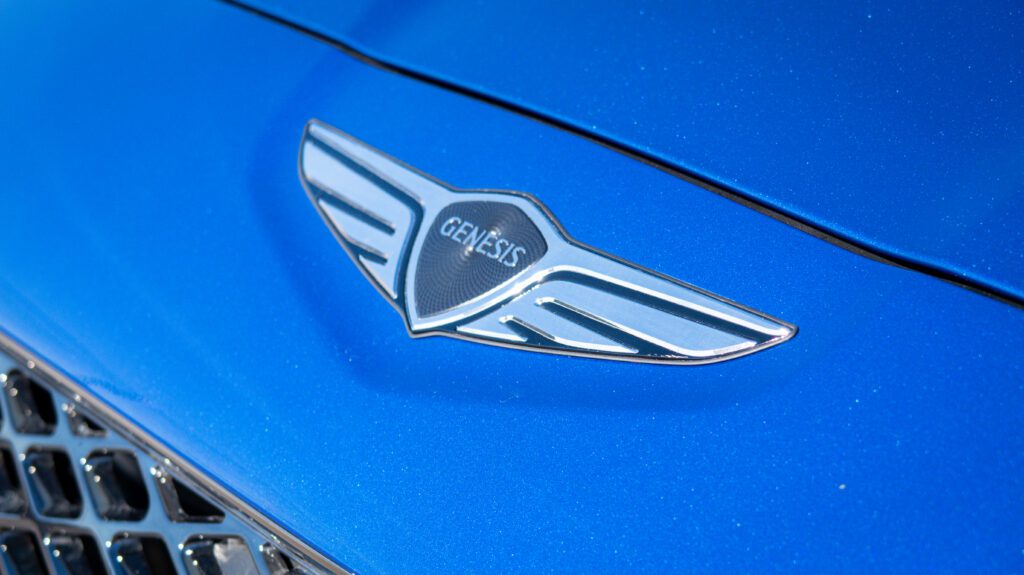
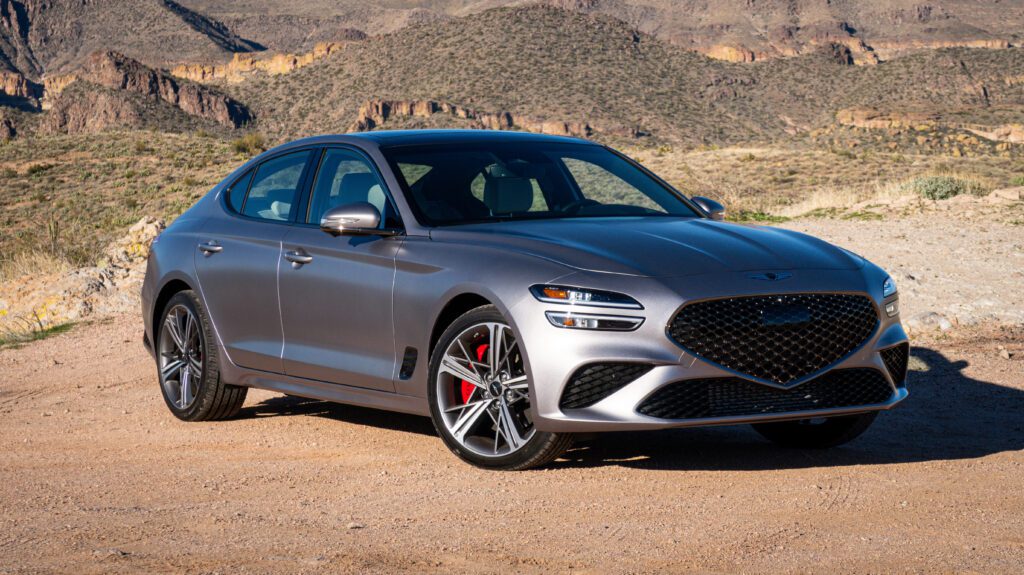
The former half is headlines by the standardization of 19″ wheels across all G70s, part of Genesis’ bid to further lean into the car’s inherent athleticism. Multiple new designs better in keeping with the Genesis design language are available, and all are 19-inchers wrapped in Michelin Primacy all-seasons or Pilot Sport 4 summers, depending on powertrain configurations. There are also four new color options: Bond Silver, Cavendish Red, Vatna Gray, and Kawah Blue. The interior also gets a new two-tone Fog Gray and Obsidian Black upholstery option.
The latter half is where the more substantial details rear their heads, such as improved iOS support for using your phone as a digital key, as well as cloud-connected support for over-the-air updates, customizable driver profiles, and routing.
More accessible go-fast goods
As an added bone to throw at prospective G70 buyers, go-fast goods once exclusive to the 3.3T are now standard across the board. Most notable are the enlarged Brembos, with its 4-piston front and 2-piston rear calipers chomping down on 13.8-inch front and 13.4-inch rear rotors. Standard 2.5T cars get white/silver-painted calipers, while Sport Prestige and Sport Advanced 2.5T and 3.3T cars come red-painted. 3.3T cars get variable-ratio steering as standard, while speccing the Sport Prestige pack adds electronically-controlled suspension tied to the adjustable drive modes and a mechanical limited-slip diff.
Oh. And if you can believe it, all-wheel-drive G70s will continue to feature a hidden “Drift” mode. Because that’s exactly what you need on the way to the grocery store.
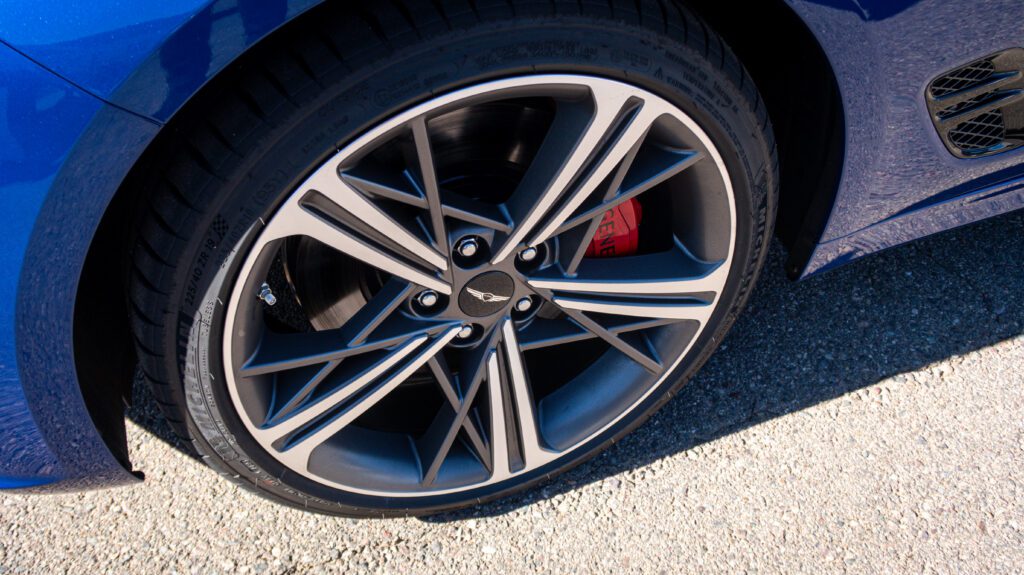
An all-new base engine
Bazinga! The real big-ticket to the G70’s continued relevance. Enter the new base engine, a 2.5-liter turbo inline-four now pushing an even 300 horsepower and 311 pound-feet of torque. Those are gains of half a liter in displacement, 48 ponies, and 51 pound-feet. Interestingly, despite the added size and grunt, fuel economy versus the outgoing base engine is roughly unchanged, meaning this new engine closes that gap between it and the top-dog V6 with little sacrifice in the process. And as we journos found out during a day behind the wheel, the new engine is certainly a bottom-rung option worth considering.
What is it like to drive?
On Phoenix’s open roads
What can I say? The enhanced G70 drives like a compelling product. A very compelling product. An instant fan favorite among journos and engineers when the car was first launched, the G70 continues to remind us of Korea’s exponential upscaling of quality and refinement. Although our press drive across Phoenix, Arizona was formulated to primarily showcase the new 2.5-liter engine and remind us of the G70’s performance credibility, we still received an ample glimpse of just how nice of a place the G70 is to commute in, from the plush leather seating that never leaves you fatigued after hours to the attractive and logically-laid out interior controls.

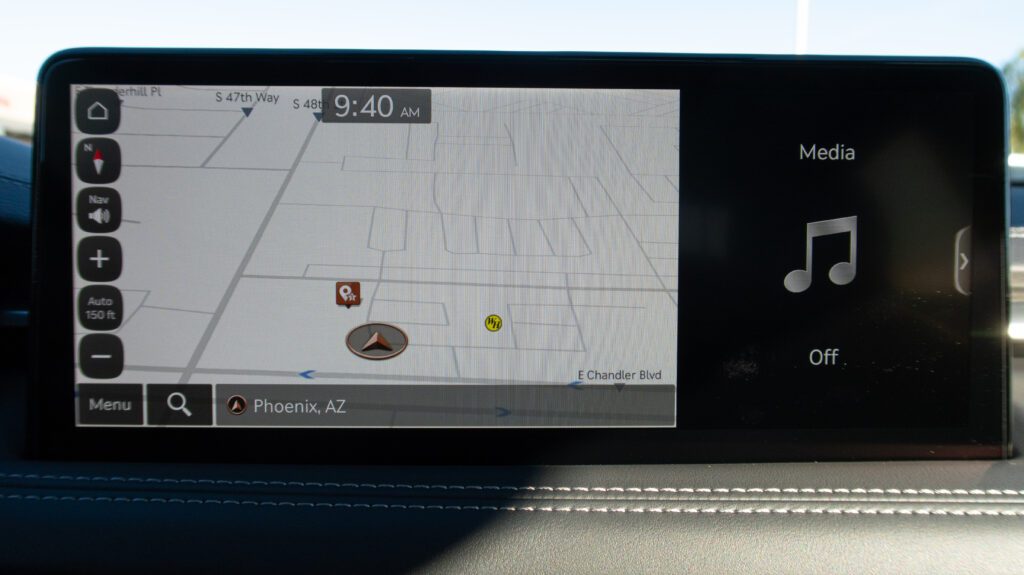

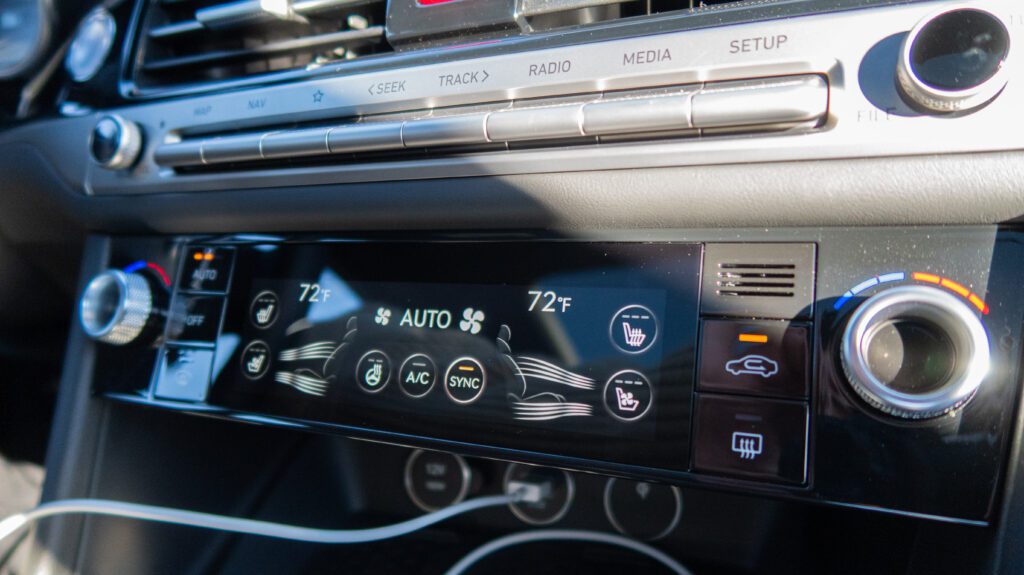
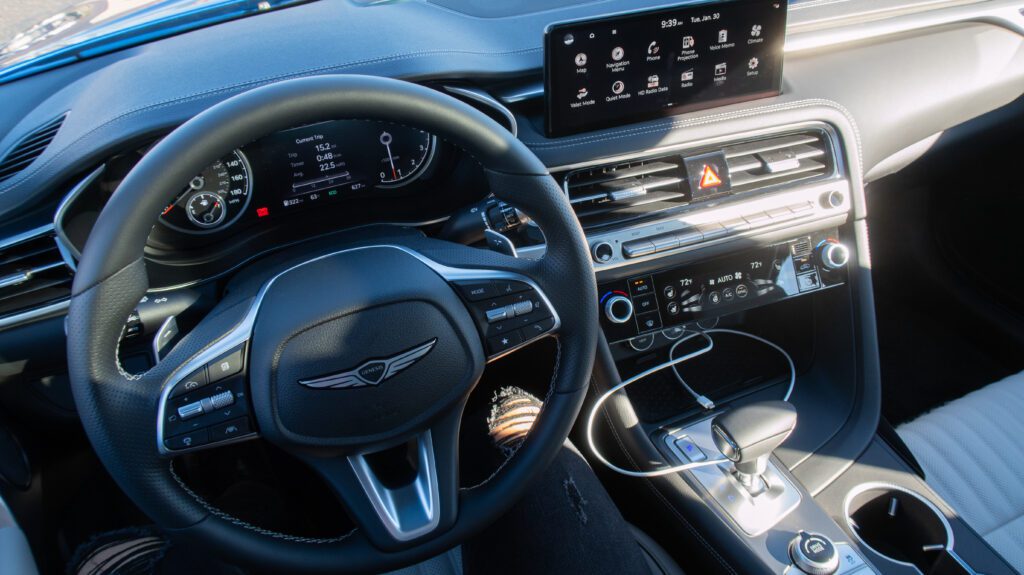
The 10.25-inch infotainment screen proved as crisp and quick to the touch as ever and appreciably remains at an arm’s reach. The all-new digital climate controls are equally as intuitive, with haptic feedback to boot. And old-fashioned types fret not, as the most important controls, such as temperature, Off, and Auto, still exist as hard physical switches flanking the display. And speaking of physical switches, all hard controls in the car carry a sense of heft and density not always found in other luxury vehicles. Plastic buttons feel properly tactile and without the usual plasticky hollowness or looseness, and even the climate vents move with a bit of weight as though they were dampened.
You’d figure this to just be the norm for this class of car, but I’ve been proven wrong on a few occasions. I’ve been in current Mercedes products that didn’t feel this tightly screwed together nor had this likable of an infotainment system.
Whether behind the wheel of a four-banger or a V6, the powertrains and sole 8-speed transmission all proved buttery smooth and more than capable of wafting you along in traffic. Even the itty-bitty 2.5T had no issues with on-ramps or stoplight drags, feeling every bit as strong as a base model pony car or some higher-tier hot hatches. Both powertrains were fairly inoffensive, although the four-banger does make the typical droney groan, made nonissue by the G70’s commendable sound insulation.

Just as refined was the G70’s ride over the admittedly terrible and potholed-to-hell Arizona roads. The Sport Prestige’s electronic suspension was as serene as can be for a shorter-wheelbase luxury sedan with sporting intentions. You can still feel the occasional rock or expansion joint, but it never jostles you nor sends any impacts up your tush. You’ll probably hear the bumps more than feel them, but you’ll know they’re there. Even so, the G70 remains composed and compliant over such harsh tarmac. Impressive, considering the Michelin’s thin sidewalls on the 19-inch rollers, and one can wonder how a set of 18s could be even better.
Color me impressed overall, especially with the ride quality. Your average Scottsdale retiree wouldn’t mind rocking one to ferry them to and from the country club.
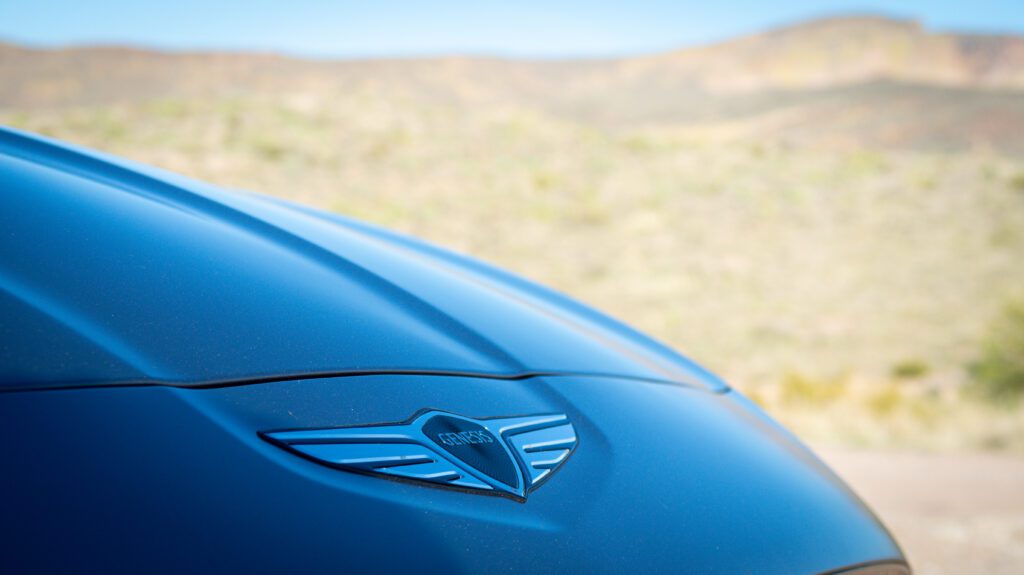
Smashing apexes (and cones)
Saved the best section for last. Even though no sensible G70 owner is ever going to track theirs, they totally should because the G70 totally can. It’s not perfect, and even the engineers know there’s room on the table for a real BMW M or Lexus F fighter, alluring prey for a car graced by ex-M engineer, Albert Biermann, who spearheaded the development of Hyundai’s acclaimed N lineup. But as it sits as just the bread-and-butter sedan, I can confidently the G70 earns its place as a formidable foe to those long-standing titans from beyond its borders.
On track, the Pilot Sport 4 tires and electronically-controlled dampers on our rear-drive 3.3T track testers easily dispatched the tight corners of APEX Motor Club, with our lead driver quickly encouraging us to push harder and harder to keep pace. The variable-ratio steering was nowhere near as aloof or unpredictable as I thought it’d be and proved to be wonderfully precise for reigning in those little drifts you can get on corner exit. Body control was rock solid, with a noticeable but buttoned-down lean that never incited fear, whether on track or out in the twisties of Tortilla Flats. With a 225-wide front tire and 255 rear, understeer is the dominant trait, but it’s nothing a little extra throttle and steering input can’t quell.
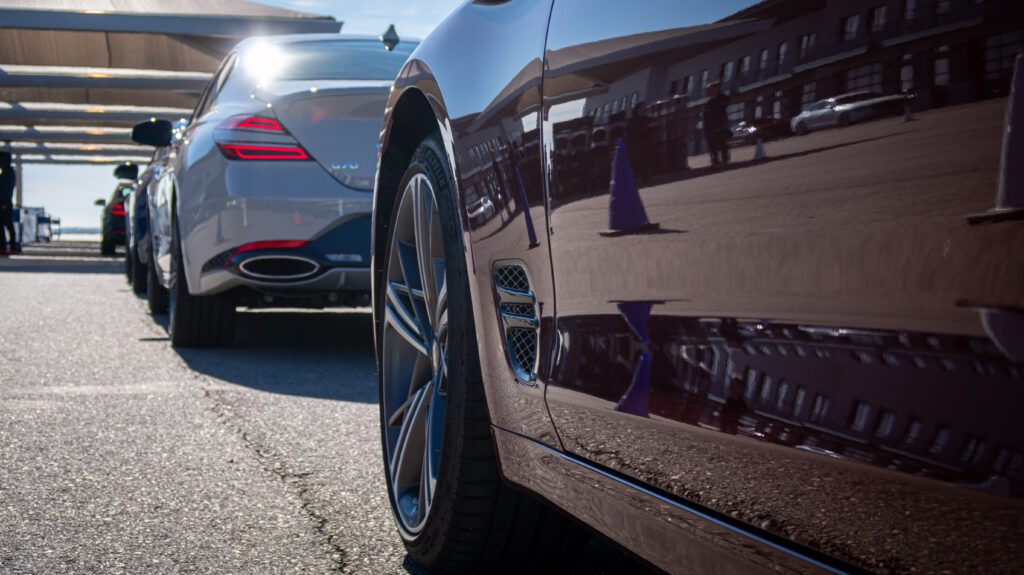
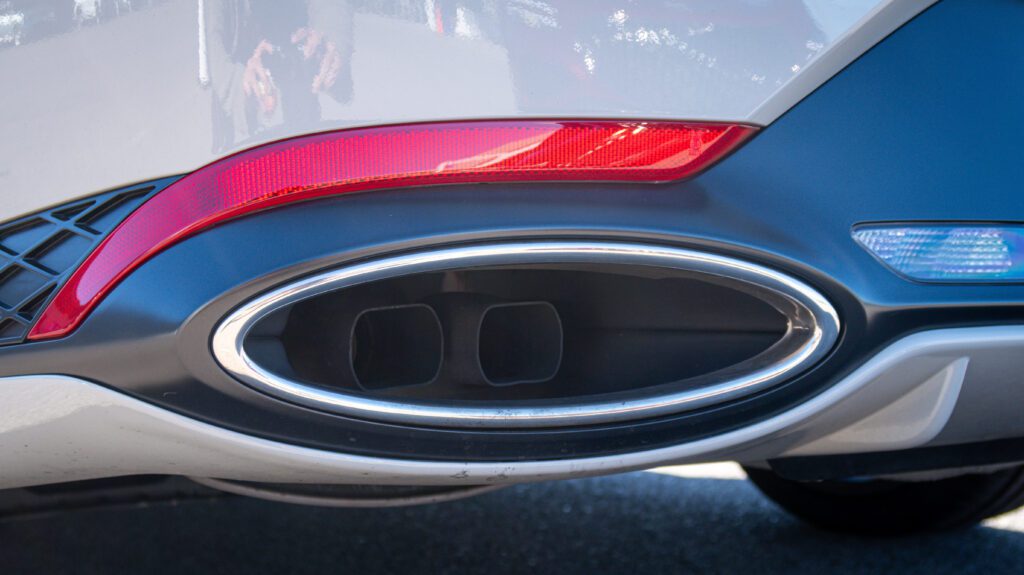



While our track and canyon runs were in Sport Prestige variants of the 3.3T, we did get the chance to sample the 2.5T on a tight autocross course, where the estimated 200 to 300-pound weight difference became immediately apparent. Yes, the 3.3T is where it’s at for performance junkies. And again, no, no one’s really going to track or autocross any Genesis G70 except for us weirdo journalists. But if they should dare, there’s a lot to love with the lighter, more responsive nose of the four-banger. And even without the oomph of the V6, 311 pound-feet plus shorter gearing for the 8-speed gearbox and final drive prove to be plenty for lighting up the rear tires and hanging slides left and right. Ask us how we know.
Yeah. It’s, first and foremost, a cushy luxury car for 21st-century yuppies to haul themselves and perhaps a guest or two around downtown en route to the nearest North Italia. But it still puts the “sport” in sports sedan.

A proper sports sedan made better
We’re happy to report the G70 remains a fantastic, playful, fun-to-drive offering in a segment often criticized for distancing themselves from their old driver’s car mantras in favor of solely tech advancements. And if one of the Genesis team member’s warning that we “haven’t heard the last of G70” is anything to heed, we’re certain there’ll be even hotter versions in the near future.
Thankfully, the G70’s added performance chops across its entire lineup didn’t dent its luxury car cred. In fact, I’d argue this is the best balance of the two halves of its identity to date, and we can’t wait to score one for a few days of testing to see what’s really hot and what’s actually not. So, stay tuned! Or, if you’d rather not wait and prefer to see for yourself as you should, you can check out the updated G70 when it hits U.S. showrooms in a matter of weeks.
[Button id=”370″]

Now, Genesis. Please allow the Hyundai N team to work their magic. Korean M3 fighter, anyone?

